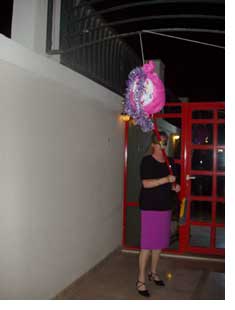
This week one of my friends held a party to combine the celebration of his move to a new house and the Mexican fiesta of Cinco de Mayo. Until a few years ago I had never heard of this festival, and as it seems to be getting more popular each year I thought I’d look into its origins, so this week’s article is a kind of history lesson.
The May 5 holiday commemorates the victory of the Mexicans over the French army at The Battle Of Puebla in 1862. This battle occurred at a turbulent time in Mexico's history. The country had gained independence from Spain in 1810, but a number of internal political takeovers and wars, including the Mexican-American War (1846-1848) and the Mexican Civil War of 1858, had paralysed the national economy. Mexico had accumulated heavy debts to several nations, including Spain, England and France, who were demanding payment. France was eager to add to its empire at that time, and when Mexico finally stopped making any loan payments, France used the debt issue to try to establish its own leadership in Mexico by installing Napoleon's relative, Archduke Maximilian of Austria, as ruler.
France invaded the Gulf coast of Mexico and began to march toward Mexico City. On May 5,1862, a small, poorly armed militia of about 4,500, lead by Mexican General Ignacio Zaragoza Seguin, defeated the well-equipped French army of 6,500 soldiers. Unfortunately, the victory was short lived, as on hearing the bad news, Napoleon sent more troops to invade Mexico again and a year later the French were eventually able to depose the Mexican army, take over Mexico City and install Maximilian as ruler.

Maximilian's rule was brief however (from 1864 to 1867) ending as the U.S. began to provide more political and military assistance to Mexico to drive out the French. Despite the eventual French invasion, Cinco de Mayo honors the bravery and victory of General Zaragoza's small, outnumbered militia at the Battle of Puebla.
Celebrating Cinco de Mayo has become increasingly popular in parts of the world that have a high population of people with a Mexican heritage and is becoming adopted into the holiday calendar of more and more people each year. The holiday is a celebration of Mexican culture, food, music, beverage and customs unique to Mexico. One of the main celebrations revolves around the piñata, which is a pottery (or now more usually papier-mâché) container, brightly decorated usually with animal or funny faces, and filled with candy and toys. It is hung from the ceiling or a tree. One by one, people are blindfolded, turned around and instructed to strike the Piñata with a stick. Usually several attempts are made before the container is broken and when that happens there is an explosion of goodies for everyone to enjoy.
Visit www.bry-backmanor.org/holidayfun/pinata.html for instructions on how to make your own piñata to enjoy at your next party, whatever the celebration may be.